x
The weather was finally better this weekend and I was able to get out and walk several days in a row. It’s been awhile since I’ve been able to do that and I was overjoyed, although I think I need to order some new sneakers. My foots are starting to hurt me.
Foots.
It might sound cute when a 3 year old says it, but once kiddos hit elementary age….incorrect irregular plural forms stand out as…..wrong. The tough thing is that English has a variety of irregular forms and there aren’t any hard and fast rules. So for our kiddos with language disorders, irregular forms usually require explicit instruction. And, unfortunately, that instruction often requires lots of repetitions before it becomes automatic.
And don’t get me started on written plural forms! (Although, if they “have it” expressively, chances are they can take a pretty good stab at the correct spelling of them….)
When I start with irregular plurals, I start with instruction and I don’t ask “and these are….?” If they are below 80% accuracy, I’m feeding them the information. I might start with objects that we dig for in my portable sandbox or in a sensory type bin. Or maybe we’ll pull the objects out of a pillowcase.
As we pull items out, we’ll say the name, “deer,” as we pull out more, and as some become duplicated, we’ll sort them in piles so we can start using the plural. For example, we might add another deer and I’ll label, “two deer.” I have a pretty substantial collection of miniatures. The “easy” irregular plurals for me to pull together are: geese, deer, moose, sheep, dice, scissors, and leaves.
Pictured words can be used for less common vocabulary.
There are a bunch of irregular plurals that don’t lend themselves to easily collected objects. So for these, I rely on interactive worksheets. Yep, they exist!
My students help me fold/cut these themselves and it takes just a minute or two. What we end up with are seven pairs of singular/plural noun forms per sheet that we can use to drill, drill, drill. Most often, I’m using the worksheet that has the label already typed in, but for some of my older students, I have them write in the form themselves. The added practice seems to help it stick.
Once they have these down pretty well, I start adding in rebus stories. I read all of the written parts of the story and just have them fill-in-the blank when we reach a pictured word. We’ll read the story 1-2 times/session for a couple of weeks to make sure it’s becoming second hand and they understand how the word is used in conversation. You can also look for picture books like “Mouse Paint” which encourages language with “mice” or “Sheep in a Jeep.”
Finally, we move on to a game board. They can simply tell me the word or, more often, I’ll have them make up a new sentence with it.
I also use worksheets with blanks for them to fill in the correct form from a word bank. I sometimes use these in therapy or send them home for practice. Sometimes I cut off the word bank and use the sheet for assessment.
If you’d like to take a look at my Irregular Plural Nouns products, check the bundle out here. It has links to the individual titles in the series too.
The bundle has a bonus pack of irregular plural flashcards. There are three of each item. We pulled them out of a bag this week, but we’ll be using the pairs to play games like Memory and Go Fish when we get back from break. “Do you have a goose? Hooray! I have two geese!”
Which irregular plural noun do you use most often? Unfortunately for me, lately it’s been mice. Ugh. They got into some leftover Valentine’s Day candy in my therapy room a few weeks ago. Maintenance has trapped two so far. Happily, none were trapped over the past week, so I’m hoping the drama might be over…..Please be over! I’ve been knocking before I go into my materials closet, hoping that if there is still one in there, it has the decency to hide before I open the door!


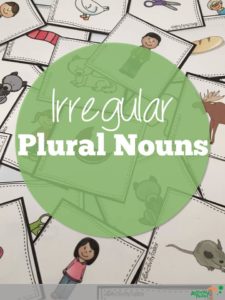
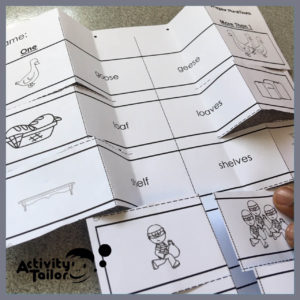
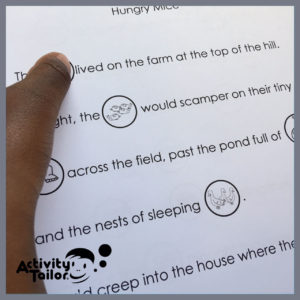
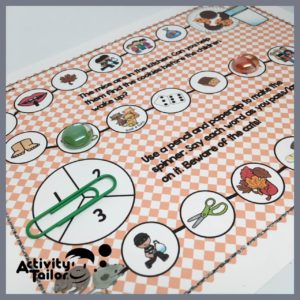
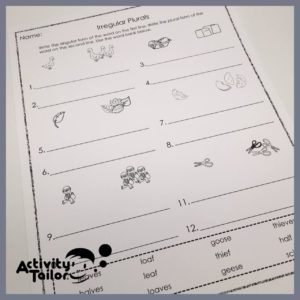
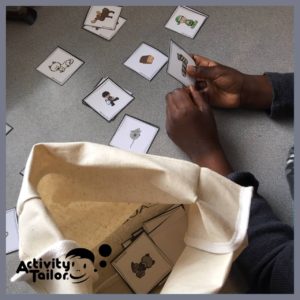




This Post Has 2 Comments
These are great. I will get lots of use from them.
So glad to hear this!
Comments are closed.